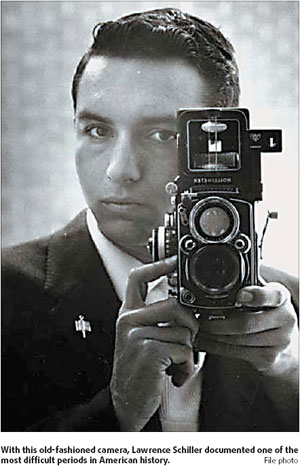The man who captured Marilyn
The world was unprepared for the moment in May 1962, when Marilyn Monroe jumped in the swimming pool in a flesh-colored bikini and came out of the water au natural - she was all smiles and in her element: the sex goddess, posing for eternity. Lawrence Schiller captured the moment in the right place at the right time.
Open from September 18, legendary photographer, writer and director Schiller, 71, will bring to Chinese people his perspective of America.

The photographs on display document one of the most difficult periods in American history, one that started with optimism and ended in chaos. It was 10 years of turmoil and exploration.
Marilyn Monroe sang Happy Birthday to President Kennedy who was then assassinated the following year; Cassius Clay captured the heavy weight title and changed his name to Muhammed Ali; Martin Luther King gave the historical speech I have a dream and was later assassinated.
Throughout this turbulent decade, whenever a headline-making news event occurred, Schiller was there. His special perspectives captured every historical moment and figures.
"Marilyn Monroe was a smart woman who clearly knew how to present herself in front of public," Schiller says. "But she was actually a simple and shy woman. She married to have children and tragically died alone."
In the 1960s, Schiller's works appeared in leading publications throughout the world. During the mid-1970s, he turned to writing and film directing. His books, films and collaborations have won an Academy Award, seven Television Emmys, numerous New York Times bestseller listings and a Pulitzer Prize.
Schiller's interest in China started in 2005 when he first visited the country and began to document China's modern history from 1933 to 2001.
"Before coming to China, I hadn't read any books about China, but I decided to try and understand Chinese modern history in my way," Schiller says.
Schiller's footprints were left all over China, from small villages in Southwest China's Yunnan Province to big cities like Beijing and Shanghai. He interviewed 37 families and recorded lives and memories of sons, mothers and grandmothers and the different historical periods they experienced.

Schiller has also made friends with many Chinese photographers. While traveling in Yunnan, he saw a series of pictures named Dusk, and he was deeply moved by the emotional scenes of people and cities. Schiller found the photographer Hai Bo, through whom he learned more about Chinese photographers.
"I speak history in my pictures, Hai Bo speaks a generation," Schiller says.
"China may create excellent photographers in a short period, since there is a good education system and artists are well trained," he says.
The exhibition ends on Sunday at the Beijing World Art Museum before moving to 798 Photo Gallery for another month-long display.
(China Daily 09/19/2007 page18)














